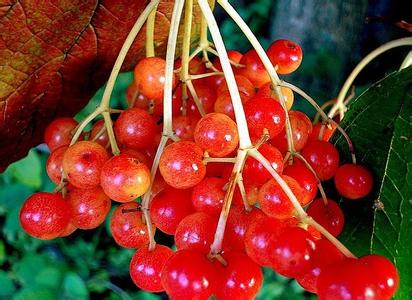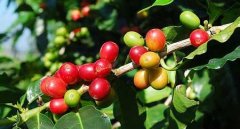A brief introduction to the History and Culture of the Origin and Development of the Snow vein Manor in Bolivia with medium acidity

Bolivia is a landlocked country, about one third of its territory is Andes mountains, rugged terrain, high altitude. La Paz is also known as the highest altitude capital in the world. Although there is no beautiful tropical seaside scenery, the lake scenery and the unique scenery of the Andes Mountains in the territory are also very nostalgic. The Salt Lake of Uyuni, known as the mirror of the sky, is a wonder of the world. Without a developed economy, this is one of the poorest countries in South America. But the people here are quite optimistic and open-minded. It's true that different people have different pleasures in life. The main problem coffee producers face is trying to keep quality stable. The coffee is generally very balanced and refreshing, with a distinct aroma.
Ecuador is one of the few countries in South America that produces both Arabica coffee and Robaik coffee. But as the land available for arabica coffee trees dwindles, robert coffee production is increasing. The best Arabica coffee is grown in the Andes, especially in the Chanchamgo Valley, which is divided into two mountain ranges extending from south to north to central Ecuador. Arabica coffee trees were first introduced to Ecuador in 1952, and their coffee quality is very good, especially when harvested in early June. Ecuadorian coffee beans can be divided into Galapagos (Galapagos) and Gigante (Gigante) two varieties, both have large particles, heavy portions of characteristics. Ecuadoran coffee can be classified into No. 1 class according to quality. 1)and Extra Superior. They are mainly exported to Scandinavia and the Nordic countries. In the past, coffee trees in Bolivia were often planted around gardens as hedges and ornamental plants. Real commercial production began in the early 1950s. Bolivia benefited from the severe frost of 1957, which severely damaged Brazil's coffee industry and quickly expanded. Bolivian coffee is grown at an altitude of 180 to 670 meters, and the arabic washed coffee beans are exported to Germany and Sweden. The taste is not the best today, and it has a bitter taste.
The acidity is medium and low, but the feeling is not monotonous, but calm and generous, soft and fresh. You can even feel the sourness of citrus fruits when you taste them in the sourness.
Bolivia coffee overall taste rich and balanced, in addition to the good sour taste there is a light chocolate flavor, smooth taste is to give people a smooth feeling, in contrast to the bitter taste is not obvious. The coffee has a nice aftertaste, and the sweet taste lingers in your mouth after you drink it, and it's a wonderful experience to remember that coffee in Bolivia really started being commercially produced in the 1950s. Coffee grew rapidly in a short time, thanks in part to a frost in Brazil in 1975, when the Brazilian coffee industry was hit hard, and Bolivia's coffee industry took advantage of the boom.
It was a strange country, the legal capital being Sucre, and the seat of government La Paz. Sucre has only the Supreme Court, but La Paz is the seat of government and parliament.
Important Notice :
前街咖啡 FrontStreet Coffee has moved to new addredd:
FrontStreet Coffee Address: 315,Donghua East Road,GuangZhou
Tel:020 38364473
- Prev

A brief introduction to the treatment of Grinding degree and baking degree of full Tanzanian Coffee in Arusha Coffee Manor
Coffee is like the simple, frank and enthusiastic national character of Tanzania. Its refreshing acidity and medium mellowness complement sweet citrus and floral aromas. You can see that different ethnic groups produce different coffee flavors, while the same land gives birth to coffee trees and coffee exports from Tanzania (Tanzania) play an important role in the whole national economy. Past, Tansan.
- Next

A brief introduction to the flavor and taste characteristics of Bolivian coffee manor snow vein manor with unique aroma
The overall taste of Bolivian coffee is rich and balanced, the aroma is rich and unique, similar to the mixture of flower and fruit aroma, impressive. The perennial low temperature environment makes the coffee fruit grow slowly, compact enough, the aroma is also charming, the floral aroma is obviously medium and low acidity, but the feeling is not monotonous, on the contrary, it appears soft and fresh, with the sour taste of citrus fruit. Because of Bolivie
Related
- Does Rose Summer choose Blue, Green or Red? Detailed explanation of Rose Summer Coffee plots and Classification in Panamanian Jade Manor
- What is the difference between the origin, producing area, processing plant, cooperative and manor of coffee beans?
- How fine does the espresso powder fit? how to grind the espresso?
- Sca coffee roasting degree color card coffee roasting degree 8 roasting color values what do you mean?
- The practice of lattes: how to make lattes at home
- Introduction to Indonesian Fine Coffee beans-- Java Coffee producing area of Indonesian Arabica Coffee
- How much will the flavor of light and medium roasted rose summer be expressed? What baking level is rose summer suitable for?
- Introduction to the characteristics of washing, sun-drying or wet-planing coffee commonly used in Mantenin, Indonesia
- Price characteristics of Arabica Coffee Bean Starbucks introduction to Manning Coffee Bean Taste producing area Variety Manor
- What is the authentic Yega flavor? What are the flavor characteristics of the really excellent Yejasuffi coffee beans?

